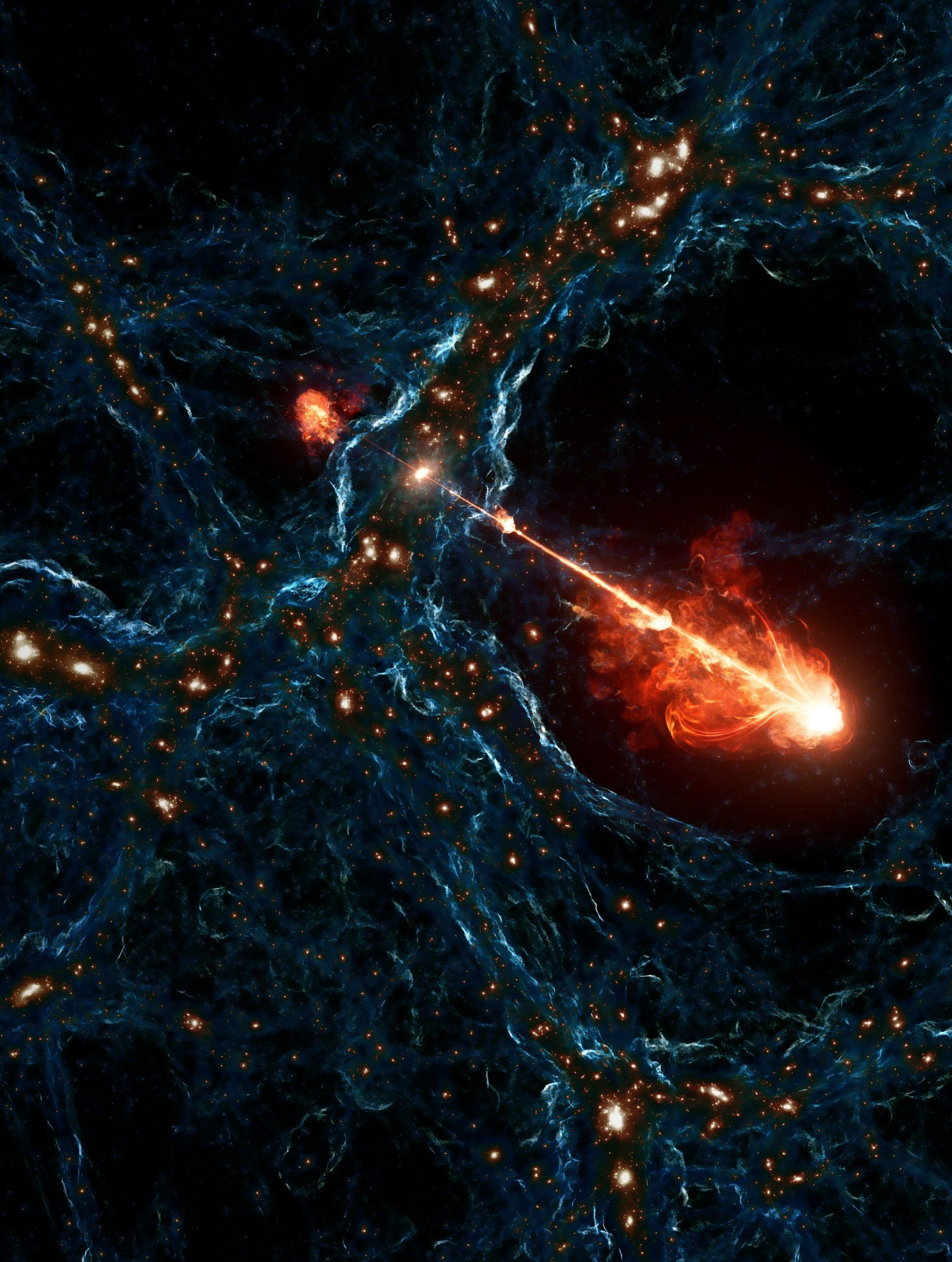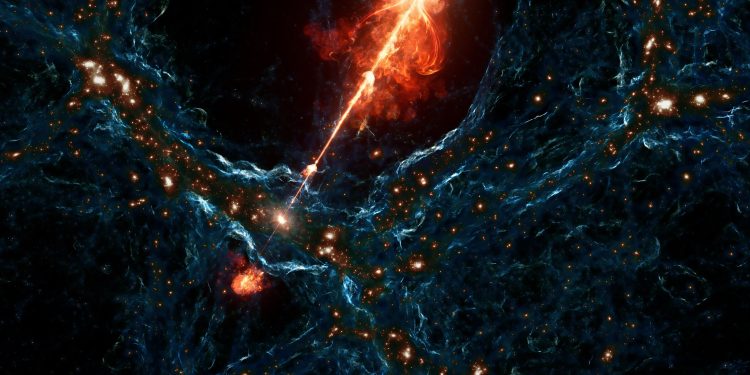“This pair of jets is massive—not just in terms of a galaxy or a solar system—but 140 times the diameter of the Milky Way,” explains Martijn Oei, a postdoctoral scholar from Caltech and lead author of a study published in Nature. “In comparison, the Milky Way would look like a tiny dot next to these two giant eruptions.”
Nicknamed Porphyrion after a figure from Greek mythology, this jet system dates back to when the universe was about 6.3 billion years old, less than half its current age. These powerful jets, with energy equivalent to trillions of suns, shoot from above and below a supermassive black hole in a faraway galaxy.
What Makes This Discovery So Exciting?
Before Porphyrion was found, the largest known jet system was Alcyoneus, discovered in 2022 by the same team. Alcyoneus spanned the size of about 100 Milky Ways, while the well-known jets of Centaurus A, which is much closer to Earth, stretch just 10 Milky Ways. The discovery of Porphyrion opens up new possibilities about how these colossal structures might have impacted galaxy formation in the early universe.
At the time Porphyrion formed, the universe’s “cosmic web” — filaments that connect and nourish galaxies — was much tighter than it is today. This means jets like Porphyrion stretched across larger portions of the cosmic web, likely playing a much bigger role in shaping the galaxies of that era than we previously thought.
Interestingly, Porphyrion is just one of many. Using the LOw Frequency ARray (LOFAR) radio telescope in Europe, astronomers have uncovered over 10,000 faint megastructures, including giant black hole jets. Prior to this survey, scientists knew about hundreds of these large systems, but they had no idea just how common they actually are.
“Giant jets were known before we started, but finding so many was a big surprise,” says Martin Hardcastle, a professor of astrophysics at the University of Hertfordshire.
This discovery suggests that the universe is full of these giant jets—many of which we’ve only just begun to spot.

Where Did Porphyrion Come From?
To track down the galaxy hosting Porphyrion, researchers turned to the Giant Metrewave Radio Telescope in India and additional data from the Dark Energy Spectroscopic Instrument (DESI) in Arizona. They pinpointed its origin to a galaxy 10 times the size of our Milky Way, located 7.5 billion light-years from Earth.
What’s surprising about Porphyrion is that it came from a radiative-mode black hole—a type of black hole that wasn’t expected to produce such powerful jets. Previously, scientists believed that only jet-mode black holes could do this. Since radiative-mode black holes were more common in the early universe, there could be even more massive jets waiting to be found. Although the discovery of Porphyrion answers some questions, it raises others. How do these jets remain so stable and extend so far beyond their galaxies? Hardcastle suggests it could be due to a long-lived accretion event, which allowed the black hole to stay active for up to a billion years.
As the team looks to better understand how these jets interact with their surroundings, Oei is particularly interested in their role in spreading magnetism throughout the universe. “Magnetism is essential for life on Earth,” he says. “We want to understand how it came to be and whether these jets helped spread it across the cosmos.” This discovery marks the beginning of what could be a new chapter in our understanding of the universe. As astronomers continue to explore, who knows what other cosmic giants they’ll find?











